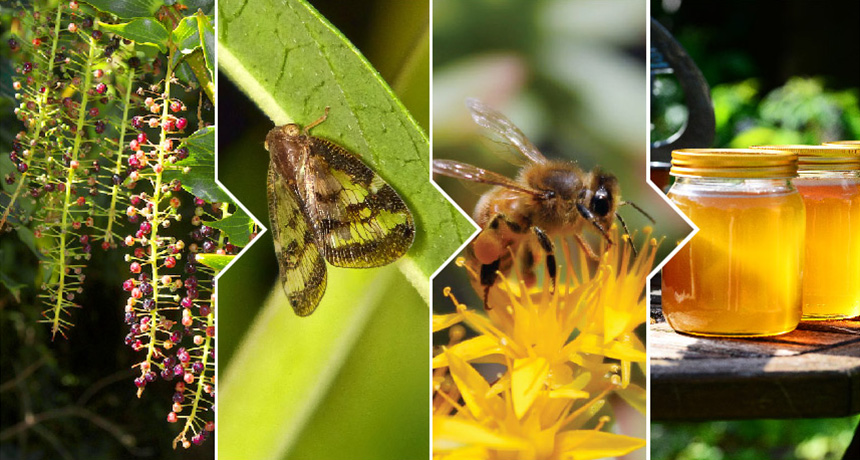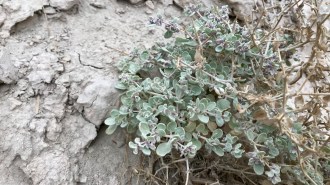Mystery toxins in tainted New Zealand honey nabbed
Chemical analysis traces toxic trouble from bees back to a plant’s stealthy biological defense

TOXIC TRAIL Researchers have discovered a trail of covert forms of tutin, a potent neurotoxin, that goes from tutu shrubs (far left) to passionvine hoppers (center left) to European honeybees (center right) to honey (far right).
Jon Sullivan/Flickr (CC BY-NC 2.0); Sid Mosdell/Flickr (CC BY 2.0); © Andrea Vannini/inaturalist.org (CC BY-NC); PollyDot/Pixabay







